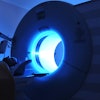Diagnosing a pneumothorax in a pediatric patient and assessing its size are important for proper clinical management, especially in determining the need for chest-tube drainage. MDCT scans make diagnosis easier, but manually contouring identified pneumothoraces to determine their size can take hours to perform.
Now, researchers from Harvard Medical School have developed an automated computer-aided volumetry software program that accurately detects and quantifies pneumothoraces shown on CT images in less than five minutes per scan. It's described in the March issue of Academic Radiology (2011, Vol. 18:3, pp. 315-323).
In 2008, the research team developed an automated system to use with CT images of adult trauma patients with occult pneumothorax (American Journal of Roentgenology, March 2009, Vol. 192:3, pp. 830-836). The software version for pediatric patients incorporates a major change, according to lead author Wenli Cai, PhD, assistant professor of radiology: It uses a new method for extracting the pleural region, utilizing the rib structures as reference for segmentation of the pleural cavity.
Cai and colleagues also determined that this computer-aided volumetry software produced more accurate results when a slice thickness of 1.5 mm or less was used, along with the reconstruction kernel B70f, which generates sharp CT images.
The research team tested the software on images from thoracic MDCT scans of 58 consecutive pediatric patients who had clinical symptoms of pneumothoraces. The patients, who ranged in age from 1 day to 18 years, had the exams taken between November 2004 and January 2009.
For each case, a radiologist traced the manual contours of each pneumothorax. These were reviewed by a senior radiologist, and final manual volumetry was determined by consensus. The manual and computerized volumetries were compared.
The radiologists identified a total of 63 pneumothoraces. The software program identified these and an additional five false positives, achieving a sensitivity of 100% and a specificity of 91.4%.
The researchers also compared three-scaled visual assessment of pneumothoraces to the quantification results produced by the automated computer-aided volumetry software. They determined that the three-scale assessment was insufficient to provide accurate and reliable information on the size of pneumothoraces. Overall, the computerized volumetry software provided a more accurate and consistent estimation.
From a workflow standpoint, it took the software an average of four minutes to do what would take a radiologist two hours per case. In addition to increasing radiologist efficiency, its developers also believe that it may help radiologists who do not routinely evaluate thoracic CT scans of children to more easily detect and diagnose pneumothorax.
The software is currently being used at Massachusetts General Hospital, where it is undergoing additional evaluation to help determine how to apply the technique in clinical practice, Cai said. He noted that the software needs to be used with a larger base of patients, including those who are asymptomatic.




















